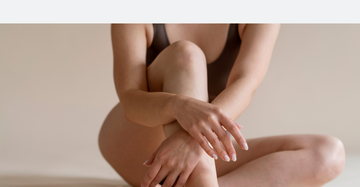Fluid retention in the legs is a common problem affecting many people worldwide. In this comprehensive guide, we will explore in detail what fluid retention is, its underlying causes, symptoms, as well as available remedies and treatments.
We will also examine what can be done to prevent fluid retention in the legs and how some health-related factors can contribute to this problem. Furthermore, we will discuss some tips on postural care and the use of compression stockings as additional measures to alleviate fluid retention in the legs.
What is Fluid Retention?
Fluid retention, also known as edema, is a condition in which the body accumulates excess fluid in the tissues. This fluid accumulation can occur in various parts of the body, but in this case we will focus on fluid retention in the legs. The legs often swell, becoming heavy and painful.
Fluid retention in the legs can be caused by a variety of factors, ranging from underlying medical conditions to unhealthy lifestyles. Identifying the underlying cause is important to properly address the problem.
Several medical conditions can contribute to fluid retention in the legs. One of them is congestive heart failure, a chronic disease in which the heart cannot pump enough blood to meet the body's needs. This can lead to fluid buildup in the legs because the heart cannot remove it efficiently.
Another medical condition that can cause fluid retention in the legs is kidney disease. When the kidneys don't function properly, they can't eliminate excess fluid and waste from the body adequately. This can result in fluid buildup in different parts of the body, including the legs.
In addition to medical conditions, certain lifestyle factors can also contribute to fluid retention in the legs. Excessive salt consumption is one of them. Salt contains sodium, which can cause the body to retain fluids. If too much salt is consumed, the body's fluid balance can be disrupted, leading to fluid retention in the legs.
Another lifestyle factor that can contribute to fluid retention in the legs is a sedentary lifestyle. Lack of physical activity can hinder proper blood circulation, leading to fluid buildup in the legs. Therefore, it's important to stay active and exercise regularly to promote good blood circulation and prevent fluid retention.
Why Does Fluid Retention Affect the Legs?
The legs are one of the areas most prone to fluid retention due to their position on the body. Gravity and lack of movement can hinder the return of accumulated fluid in the legs to the heart, resulting in swelling and discomfort.
In addition, factors such as obesity, lack of exercise, pregnancy, and aging can contribute to fluid retention in the legs. Understanding these causes is essential to take effective measures to prevent and treat the problem.
Fluid retention in the legs, also known as edema, is a common problem affecting many people worldwide. While it can be bothersome and cause discomfort, in most cases it is not serious and can be managed with lifestyle changes and simple treatments.
Main factors
One of the factors contributing to fluid retention in the legs is gravity. Because the legs are located at the bottom of the body, fluid tends to accumulate in them, especially when spending a lot of time standing or sitting. This can make the legs feel heavy and tired, and can make it difficult to move and perform daily activities.
Another factor that can contribute to fluid retention in the legs is lack of movement. When insufficient exercise is performed or a lot of time is spent in a sedentary position, such as sitting or lying down, fluid can accumulate in the legs and not flow properly towards the heart. This can cause swelling and discomfort, especially at the end of the day.
Obesity can also play a role in fluid retention in the legs. Excess weight puts additional pressure on the leg veins, making it difficult for the accumulated fluid to return to the heart. Furthermore, obesity can increase inflammation in the body, which can worsen fluid retention in the legs.
Pregnancy is another factor that can contribute to fluid retention in the legs. During pregnancy, the body undergoes hormonal changes and the amount of blood and fluid in the body increases. This can cause the legs to swell and feel heavy, especially in the third trimester of pregnancy.
Finally, aging can also play a role in fluid retention in the legs. As we age, the veins in the legs can weaken and not function as efficiently as before. This can make it difficult for the accumulated fluid to return to the heart and cause swelling in the legs.
Main causes of fluid retention in the legs
Fluid retention in the legs can have multiple causes, including:
- Sedentary lifestyle: Lack of physical activity can hinder circulation and lymphatic drainage, which contributes to fluid retention in the legs.
- Circulatory problems: Varicose veins, chronic venous insufficiency, and other circulatory disorders can affect the return of fluid from the legs to the heart, leading to fluid retention.
- Pregnancy: During pregnancy, hormonal changes and increased blood volume can cause fluid retention in the legs and other parts of the body.
- Injuries: Injuries to the legs, such as sprains or fractures, can cause inflammation and fluid retention as part of the healing process.
- Dietary factors: A diet high in sodium and low in potassium can contribute to fluid retention in the body, including the legs.
Symptoms of Fluid Retention in the Legs
Symptoms of fluid retention in the legs can vary from person to person, but the most common include:
- Swelling and a feeling of heaviness in the legs.
- Taut and shiny skin in the affected areas.
- Pain and discomfort.
- Difficulty moving or walking due to swelling.
If you experience any of these symptoms, it is important to seek medical attention to determine the underlying cause and receive appropriate treatment.
Can Fluid Retention in the Legs Be Prevented?
Fortunately, there are some measures that can be taken to prevent fluid retention in the legs:
- Maintain an active lifestyle: Regular exercise can help improve circulation and prevent fluid retention.
- Maintain a balanced diet: Limit sodium intake and increase your intake of potassium-rich foods to maintain a healthy fluid balance in your body.
- Elevate your legs: Regularly raise your legs above the level of your heart to facilitate fluid drainage and reduce swelling.
- Avoid standing or sitting for long periods of time: Being in the same position for a long time can hinder circulation and contribute to fluid retention in the legs.
Always remember to consult a doctor before starting any exercise program or making changes to your diet.
How to Treat Fluid Retention in the Legs?
Treatment for fluid retention in the legs depends on the underlying cause and severity of the problem. Some treatment options include:
- Use of prescription diuretic medications to remove excess fluid from the body.
- Compression therapy, which involves the use of compression stockings to improve circulation and reduce swelling.
- Regular elevation of the legs to facilitate lymphatic drainage.
- Changes in diet and lifestyle, such as reducing sodium intake and increasing physical activity.
- Use of food supplements that promote diuresis
It is essential to follow medical recommendations and not self-medicate. Always consult a healthcare professional before starting any type of treatment.
Fluid retention in the legs after childbirth
Fluid retention in the legs after childbirth is common due to hormonal changes and increased blood volume during pregnancy. In addition, the trauma and inflammation associated with childbirth can also contribute to fluid retention.
It is important to rest, move regularly, and maintain a balanced diet after childbirth to help reduce fluid retention. If symptoms persist or worsen, it is advisable to seek medical attention.
Top 10 Natural Remedies for Leg Swelling
Below, we present a list of the 10 best natural remedies to relieve fluid retention in the legs:
- Water Consumption | Drinking enough water can help maintain proper hydration and promote fluid elimination.
- Potassium-rich diet | Foods such as bananas, spinach, and avocados are rich in potassium, which helps balance fluid levels in the body.
- A
- Artichoke, prickly pear extract (cactus fruit). | Known for their natural diuretic properties, which can help eliminate excess fluid.
- Lymphatic massages | Lymphatic massages can stimulate the lymphatic system and help improve fluid elimination.
- Contrast baths | Alternating between hot and cold water in showers or baths can improve circulation and reduce fluid retention in the legs.
- Leg Elevation | Regularly raising your legs above the level of your heart can help reduce swelling and improve fluid drainage.
- Regular exercise | Regular physical exercise can improve circulation and reduce fluid retention.
- Avoid excessive salt consumption | Reducing sodium intake can help maintain a healthy fluid balance in the body.
- Parsley infusion | Parsley has natural diuretic properties and can help eliminate excess fluid from the body.
- Wearing comfortable, loose clothing | Wearing loose, comfortable clothing can help relieve pressure on the legs and improve circulation.
The 10 Best Foods That Help Combat Fluid Retention
Having a balanced diet rich in foods that help fight fluid retention can be beneficial for keeping your legs healthy. Here is a list of the 10 best foods:
- Spinach: It is an excellent source of potassium and other nutrients that help regulate fluid levels in the body.
- Cucumber: Contains high levels of water and is known for its natural diuretic properties.
- Celery: It is also known for being a natural diuretic food, rich in water and fiber.
- Carrots: They are rich in antioxidants and vitamin A, which can help reduce fluid retention.
- Lime: Lime juice is known for its diuretic properties and can help eliminate excess fluid from the body.
- Pears: They are low in sodium and rich in potassium, making them an excellent choice for reducing fluid retention.
- Pineapple: Contains bromelain, an enzyme that can help reduce inflammation and fluid retention in the legs.
- Watermelon: It has a high water content and is known for its diuretic properties, making it an excellent option for combating fluid retention.
- Ginger: It can help stimulate circulation and reduce inflammation, which can help relieve fluid retention in the legs.
- Tomatoes: They are a good source of potassium and vitamin C, which can help regulate fluid levels in the body.
The Benefits of Exercise to Prevent Fluid Retention and What Exercises to Do
Regular exercise has numerous benefits for preventing fluid retention in the legs. Some of these benefits include:
- Improved blood and lymphatic circulation.
- Strengthening the leg muscles.
- It helps in the elimination of fluids and toxins.
- Reducing stress and anxiety, which can contribute to fluid retention.
Some recommended exercises to prevent fluid retention in the legs include walking, running, swimming, cycling, and yoga. These exercises help improve circulation and keep the legs moving, which can reduce the risk of fluid retention.
Best Home Remedies for Fluid Retention
In addition to medical treatments, there are also some home remedies that can help relieve fluid retention in the legs. Some of these remedies include:
Apply cold compresses: Cold compresses can help reduce swelling and relieve the feeling of heaviness in the legs.
Taking Epsom salt baths: Epsom salt baths can help relax muscles and improve circulation.
Perform stretching exercises: Gentle stretches can help stimulate circulation and reduce fluid retention.
Use essential oils: Some essential oils, such as cypress and peppermint, may have diuretic properties and help reduce fluid retention.
Remember that these home remedies can be helpful as a complement to medical treatment, but should not replace it. It is always advisable to consult a healthcare professional before trying any home remedy.
Other ways to eliminate fluid retention in the legs
In addition to the remedies and treatments mentioned above, there are other ways to eliminate fluid retention in the legs that may be beneficial:
- Maintain a healthy weight: Excess weight can put additional pressure on the legs and hinder circulation.
- Avoid tight clothing: Wearing tight clothing can hinder blood circulation and contribute to fluid retention in the legs.
- Rest and elevate your legs regularly: Taking breaks and raising your legs above heart level can help reduce swelling and relieve fluid retention.
- Avoid excessive consumption of alcohol and caffeine: These substances can dehydrate the body and contribute to fluid retention.
Following a low-sodium diet: Reducing sodium intake can help maintain a healthy balance of fluids in the body.
Health-related factors that contribute to fluid retention in the legs
In addition to the factors already mentioned, there are some health problems that can contribute to fluid retention in the legs:
- Heart failure: A weakened heart may have difficulty pumping blood efficiently, which can lead to fluid retention in various parts of the body, including the legs.
- Kidney disease: The kidneys play a crucial role in eliminating waste and excess fluid from the body. If the kidneys don't function properly, fluid retention can occur.
- Liver problems: The liver plays an important role in the body's fluid balance. Liver problems, such as cirrhosis, can affect the liver's ability to maintain this balance, which can result in fluid retention in the legs.
If you suspect that an unidentified health problem is contributing to fluid retention in your legs, it is important to seek medical attention to receive an appropriate diagnosis and treatment.
Postural care to prevent fluid retention in the legs
Maintaining good posture can help prevent fluid retention in the legs. Some helpful postural tips include:
- Avoid standing or sitting in the same position for long periods of time.
- Sit with your legs elevated whenever possible.
- Do not cross your legs while sitting, as this can hinder circulation.
- Change position frequently and do gentle stretches to keep the blood circulating in your legs.





